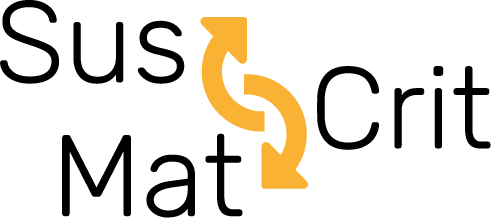Critical Raw Materials: Towards a more Sustainable Management

Supporting novel business ideas to boost the sustainable management of critical raw materials
The availability of critical raw materials (CRMs) is under massive pressure. However, these materials are essential for products, technologies and solutions to some of the world’s most crucial issues – such as the energy transition. The small numbers of suppliers, geopolitical tensions, price volatility, environmental and social damage from mining, and costly time and energy consuming extraction processes are just a few of the many associated challenges.
Addressing the criticality of raw materials is one of the most complex sustainability challenges of our time. The transition to a raw materials-intensive economy calls for a systems-thinking approach and the involvement of businesses, governments and society at large. New ideas and initiatives are needed that help solving these pressing challenges along the entire raw materials’ value chain.
We gave MOOC participants who had an idea about how critical raw materials could be managed more sustainably the chance to win 500€ and an expert advisory session.
We are happy to announce the two winners and congratulate them:
HERawS
HERawS (Highlights on Europe Raw materials Sustainability) project aims to decipher the question of raw materials sustainability for the actors of the green and digital transitions. We develop Decision-Making support tools to assess the sustainability of devices for different audiences (researchers, policymakers, journal editors). The launching of the first online platform is expected within the year.
P materials from waste
The idea was recently patented by Chemistry for Technology Laboratory of University of Brescia and INSTM (the Italian Institute of Material Science research) and it based on low-energy microwave carbothermal extraction of critical raw materials. For example phosphorous was recovered from incinerated waste stream (e.g. sewage sludge ash, poultry litter ash), enhancing the circular economy possibility of P re-use in fertilizing applications.


